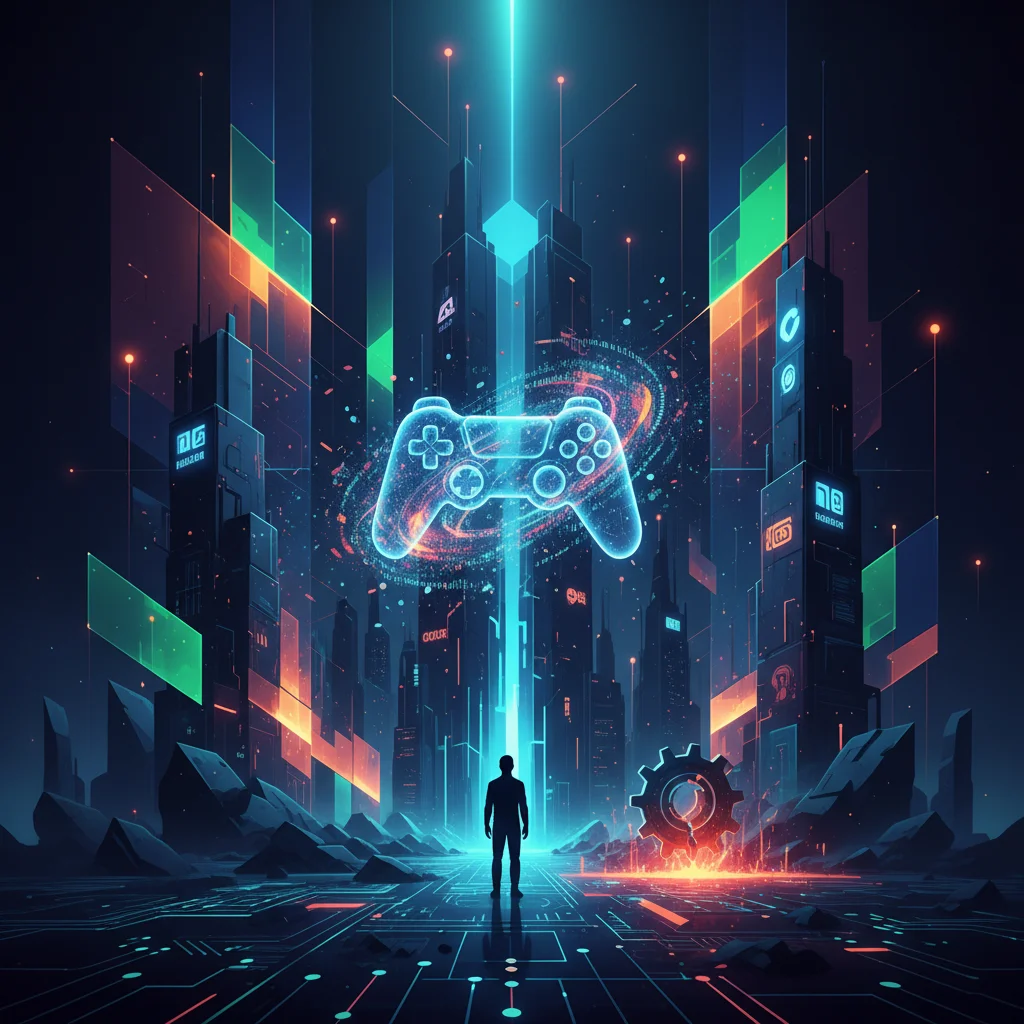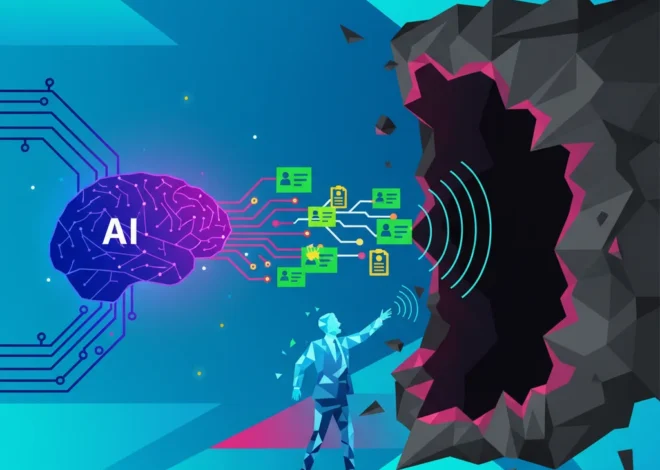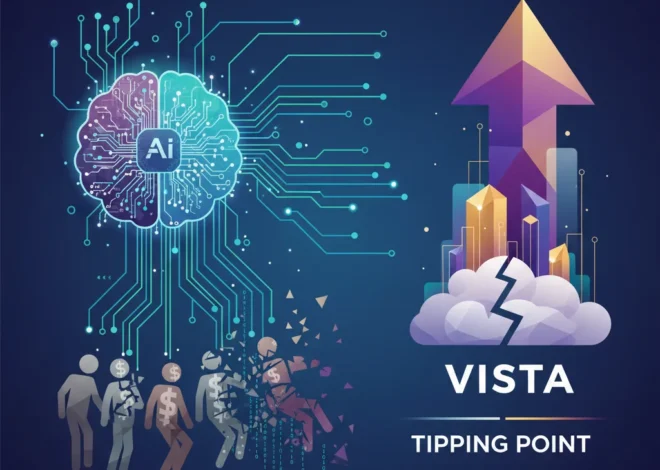
Beyond the Code: What a Sci-Fi Video Game Teaches Tech About Its Own Dystopian Future
Ever felt like just another cog in a vast, indifferent corporate machine? Like your job title is a placeholder, your performance is a metric on a dashboard you never see, and your company’s motivational posters are a thin veneer over a culture of relentless, soul-crushing optimization? If you’ve ever chuckled grimly at a memo about “synergizing our core competencies to leverage proactive paradigms,” you’re not alone. And it turns out, there’s a video game for that.
I’m talking about The Outer Worlds, a darkly comedic role-playing game from Obsidian Entertainment. Its upcoming sequel has brought its biting satire of hyper-capitalism back into the spotlight. The game is set in the Halcyon colony, a distant star system owned and operated not by governments, but by a handful of cartoonishly evil, hilariously inept corporations. The prevailing slogan isn’t “for the people,” but “It’s not the best choice, it’s Spacer’s Choice!”—a perfect encapsulation of manufactured consent and the illusion of freedom in a world governed by the bottom line.
But this isn’t just another game review. The themes simmering in The Outer Worlds are a potent, if exaggerated, reflection of the very world that tech professionals, developers, and entrepreneurs are building today. As we race to innovate with artificial intelligence, scale with cloud infrastructure, and dominate markets with disruptive SaaS platforms, this fictional dystopia serves as a crucial cautionary tale. It forces us to ask a difficult question: Are we building a brighter future, or are we just programming a more efficient version of Halcyon?
Welcome to Halcyon: A Funhouse Mirror for Modern Tech Culture
In Halcyon, corporations don’t just employ you; they own you. Citizens are born into corporate debt, live in company towns, consume company-mandated products, and are even buried in company-owned cemetery plots (with fees deducted from their final paycheck). As the original Financial Times article points out, the game is a “satirical playground” that skewers this corporate overreach with razor-sharp wit. The absurdity is the point. From scientists creating a toothpaste that causes “cadaverous skin tone” to managers who fine employees for “unauthorized grieving,” the game presents a world where human needs are secondary to corporate policy.
Sound familiar? While our reality isn’t quite so grim, the echoes are undeniable. Think of the sprawling tech campuses that provide everything from food and laundry to healthcare, creating an insular ecosystem where the lines between work and life blur. Consider the rise of gig-economy platforms where workers are algorithmically managed, their every move tracked and optimized for maximum efficiency. We’ve traded company towns for company Slack channels, but the underlying principle of corporate envelopment is stronger than ever.
The game’s narrative is a masterclass in critiquing how ideology is packaged and sold. The corporations of Halcyon aren’t just selling products; they’re selling a lifestyle, an identity. This is the playbook of modern branding, where using a certain phone, driving a specific electric car, or using a particular suite of software becomes a statement about who you are. The game simply takes this to its logical, terrifying conclusion.
The AI Revolution in the Call Center: Annihilation or Evolution?
The Algorithmic Overlords: AI, Automation, and the Code of Control
At the heart of Halcyon’s corporate machinery are its “Automechanicals”—robots that perform labor with unwavering loyalty and zero need for lunch breaks. They are the game’s most direct commentary on the role of automation. But the critique goes deeper than just replacing human workers. It’s about how technology is used to enforce control and strip away human agency.
In our world, this isn’t happening with clunky, 1950s-style robots. It’s happening through sophisticated machine learning models and integrated SaaS platforms. These are the invisible systems that determine who gets a loan, which job applicant gets an interview, and how customer service issues are resolved. They are the new bureaucratic middle managers, executing rules with perfect, impartial, and sometimes catastrophic rigidity. An AI model trained on biased historical data can perpetuate and even amplify societal inequalities, all while providing a convenient shield of “objective” decision-making for the corporation that deployed it.
Let’s compare the fictional tech of The Outer Worlds with its real-world counterparts. This table illustrates how the game’s satirical concepts are closer to our reality than we might like to admit.
| The Outer Worlds Concept | Real-World Tech Parallel | Implication for Tech Professionals |
|---|---|---|
| Automechanicals (Robots) Perform all manual labor, enforcing corporate will without question. |
AI-Powered Automation & Robotics Warehouse robots, automated customer service, and algorithmic content moderation. |
The ethical responsibility of programming systems that may displace workers or make decisions without human oversight. |
| The Board’s Bureaucracy An incomprehensible web of rules and regulations that prioritizes profit over people. |
Enterprise Resource Planning (ERP) & SaaS Platforms Rigid, cloud-based software that standardizes workflows, often removing flexibility and human judgment. |
Designing software that empowers users versus software that simply enforces top-down control. |
| Adrena-Time A performance-enhancing drug that gives a quick boost but has dangerous side effects. |
“Hustle Culture” & Productivity Hacking The relentless pursuit of efficiency through apps, bio-hacking, and a 24/7 work mentality, leading to burnout. |
Building tools and cultures that support sustainable productivity rather than encouraging self-exploitation. |
| Corporate Surveillance The corporations in Halcyon know everything about their employees’ lives and habits. |
Data Analytics & Cybersecurity Monitoring Employee monitoring software, collection of user data, and targeted advertising based on personal information. |
The challenge of balancing business intelligence and security needs with the fundamental right to privacy. |
The Startup’s Dilemma: Disruptor or the Next Spacer’s Choice?
For entrepreneurs and startups, the game’s protagonist offers a compelling model. You are, in essence, a one-person startup. You arrive in Halcyon as a disruptive force, an unexpected variable in a closed system. You have the freedom to challenge the status quo, to forge alliances, and to build something new. This is the romantic ideal of the startup founder: the visionary outsider who will upend a stagnant industry.
But the game constantly presents you with choices that mirror the ethical tightrope of a growing company. Do you side with the iconoclastic scientist Phineas Welles, who wants to tear down the system, or do you work within the corporate structure, hoping to reform it from the inside? Do you cut corners to get a crucial piece of technology, or do you stick to your principles even if it means slower progress?
Every startup founder faces these questions. The pressure from investors, the race against competitors, and the sheer desire to succeed can make compromising on your initial vision incredibly tempting. It’s easy to start with the goal of “making the world a better place” and end up optimizing click-through rates on an ad that sells a product people don’t need. The game reminds us that the path from disruptor to incumbent overlord is a short and slippery one. A crucial part of this journey involves cybersecurity—not just as a technical defense, but as an ethical framework. How you collect, protect, and leverage user data is a defining characteristic of whether your startup respects its users or merely sees them as a resource to be exploited, just as Halcyon’s corporations view their citizens (source).
Can You Program a Conscience? The Developer’s Burden
Ultimately, the world of Halcyon—its rules, its physics, its characters, and its oppressive systems—is built on code. Every line of dialogue and every corporate policy is a function of its programming. The same is increasingly true of our own world. The systems of social media, finance, logistics, and even law are being built and maintained by software developers.
This places an immense responsibility on the shoulders of those who write the code. When you design an algorithm for a hiring platform, you are making a choice about what qualities are valued and which are not. When you build the architecture for a social media feed, you are influencing how millions of people receive information. When you develop a cybersecurity protocol, you are deciding the balance between security and user freedom.
The Outer Worlds is a powerful reminder that technology is never neutral. It is a tool, and that tool will always reflect the values and biases of its creators. The developers at Obsidian used their skills to build a world that critiques power. The challenge for developers in the real world is to be conscious of the power they wield and to build systems that empower users, promote fairness, and resist the slide into the kind of efficient, automated dystopia that makes for a great video game but a terrible reality.
The Million-Dollar AI Job You’ve Never Heard Of: Rise of the Forward-Deployed Engineer
Beyond the Game: Building a Better Future
It’s easy to dismiss The Outer Worlds as just a game. But its enduring appeal lies in how it taps into a very real and growing anxiety about our relationship with corporate power and technology. It’s a thought experiment delivered with a wink and a plasma rifle.
For those of us in the tech industry, it’s more than entertainment; it’s a professional development tool. It encourages us to think critically about the products we build, the companies we work for, and the future we are creating one line of code at a time. The ultimate lesson from Halcyon is that the most dangerous dystopias aren’t built by cartoonishly evil villains, but by ordinary people just trying to meet their quarterly targets. The choice, for us as for the player, is whether to accept the default settings or to try and rewrite the system.


